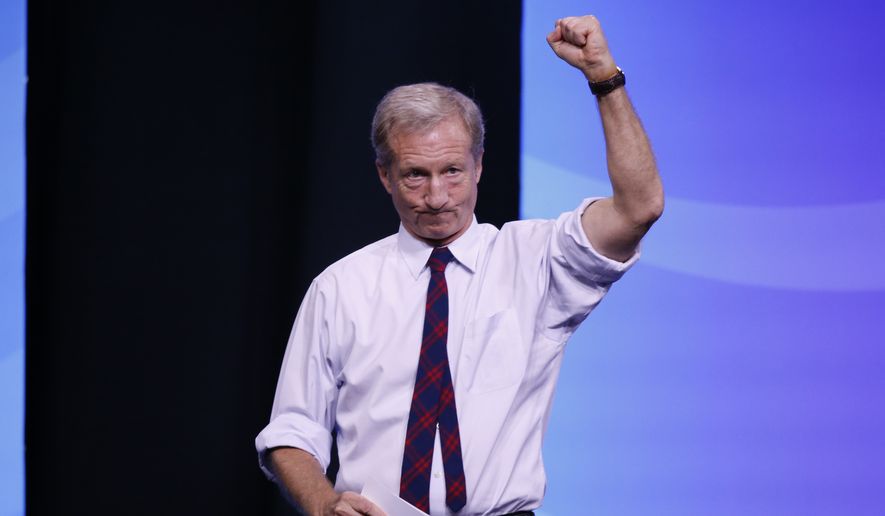Democratic presidential candidate Tom Steyer on Monday circulated an analysis of his climate change plan that showed it would create millions of jobs and boost union membership in the construction sector.
The analysis by a climate labor researcher determined that Mr. Steyer’s plan for a Civilian Climate Corps and other green initiatives would create 46 million direct jobs over 10 years.
“Investing in a low-carbon future creates real work for real people across many different industries, across every region of the U.S.,” said climate labor researcher Betony Jones, a veteran of the Clinton White House.
The new jobs included 35.3 million decarbonizing and construction jobs, 8.1 million clean energy construction jobs, 1.5 million clean energy operations and maintenance jobs and 1 million jobs in the Civilian Climate Corps, according to the analysis.
Under the Steyer climate plan, the Civilian Climate Corps would be a combined service, training and job creation effort funded with $250 billion from Congress.
The labor analysis did not include indirect jobs that would be created through the supply chain or induced jobs that would be created by the economic impact of the direct workers in their communities.
The Steyer campaign estimated that the indirect and induced jobs would number in the millions.
Mr. Steyer, a billionaire liberal activist who long championed the climate change fight, has proposed a $2.3 trillion plan to create a green economy. It resembles climate change plans offered by other Democratic candidates but is more aggressive in setting the earliest deadline — 2045 — to reach zero greenhouse gas emissions across the entire U.S. economy.
The Steyer plan is “justice-centered,” meaning it targets social justice issues and job creation in low-income communities while eliminating the use of fossil fuels.
Ms. Jones said the plan would not leave out workers in the fossil fuel industry.
“Workers employed in the fossil fuel industries possess critical skills and experience that we will need to rapidly decarbonize our economy,” she said. “They and others have a significant role to play, and Tom’s plan reflects a commitment to making sure the work of tomorrow is safer and better paying than the work of today.”
• S.A. Miller can be reached at smiller@washingtontimes.com.




Please read our comment policy before commenting.